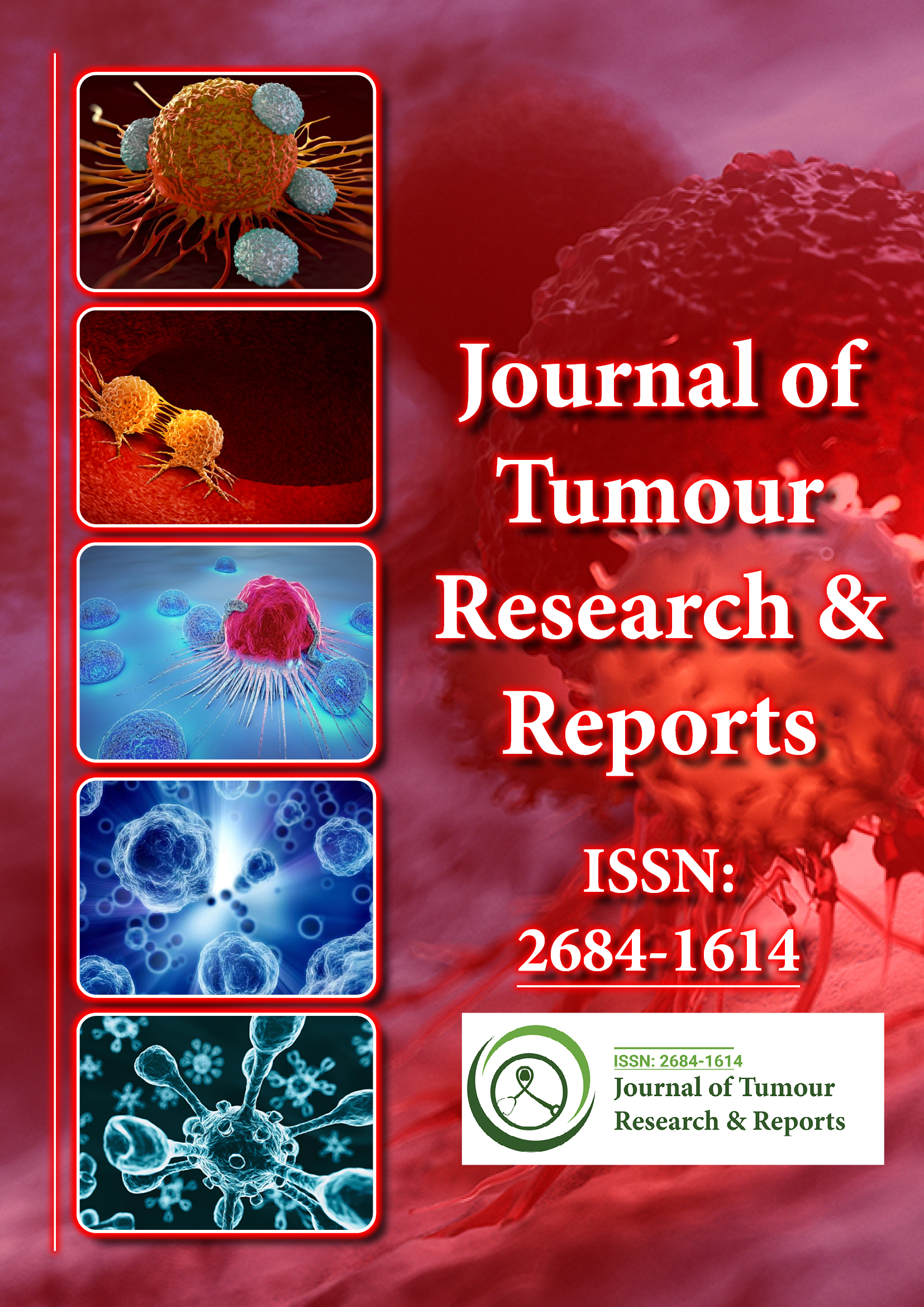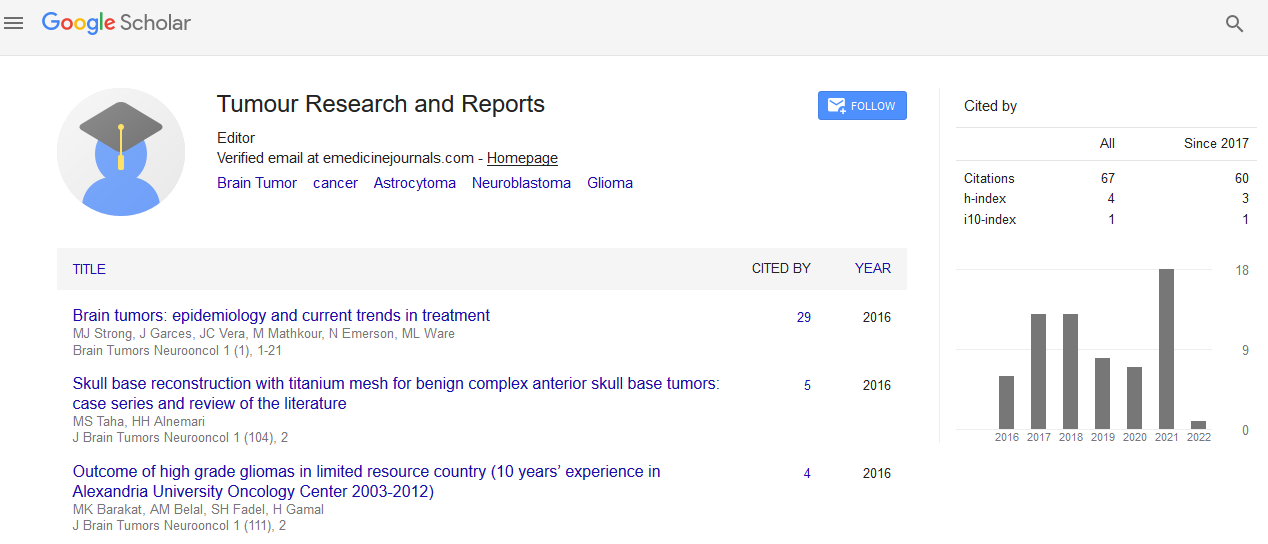Indexed In
- RefSeek
- Hamdard University
- EBSCO A-Z
- Google Scholar
Useful Links
Share This Page
Journal Flyer

Open Access Journals
- Agri and Aquaculture
- Biochemistry
- Bioinformatics & Systems Biology
- Business & Management
- Chemistry
- Clinical Sciences
- Engineering
- Food & Nutrition
- General Science
- Genetics & Molecular Biology
- Immunology & Microbiology
- Medical Sciences
- Neuroscience & Psychology
- Nursing & Health Care
- Pharmaceutical Sciences
Perspective - (2025) Volume 10, Issue 1
Liquid Biopsy as a Non-Invasive Diagnostic Tool in Pancreatic Cancer: Current Progress and Future growth
Ryohei Nakamura*Received: 03-Mar-2025, Manuscript No. JTRR-25-29019; Editor assigned: 05-Mar-2025, Pre QC No. JTRR-25-29019 (PQ); Reviewed: 19-Mar-2025, QC No. JTRR-25-29019; Revised: 26-Mar-2025, Manuscript No. JTRR-25-29019 (R); Published: 02-Apr-2025, DOI: 10.35248/2684-1614.25.10.250
Description
Pancreatic cancer remains one of the most lethal malignancies worldwide, with a five-year survival rate lingering below 10%. Its aggressive nature, late presentation, and poor response to conventional therapies make early detection a critical determinant of patient outcomes. Traditional diagnostic techniques, such as imaging and tissue biopsy, often fall short in sensitivity and are limited by invasiveness and sampling bias. In recent years, the emergence of liquid biopsy has opened new horizons for non-invasive cancer diagnostics, offering the possibility of real-time monitoring and early detection, particularly in hard-to-reach tumors like pancreatic adenocarcinoma.
Liquid biopsy involves the analysis of circulating tumor-derived components in biological fluids, primarily blood. These components include Circulating Tumor Cells (CTCs), circulating tumor DNA (ctDNA), exosomes, microRNAs (miRNAs), and Tumor-Educated Platelets (TEPs). Each of these biomarkers provides unique insights into tumor biology and offers potential utility in diagnosis, prognosis, treatment selection, and monitoring.
Among these, ctDNA has garnered the most attention due to its capacity to reflect the genetic landscape of tumors. ctDNA carries tumor-specific mutations, methylation patterns, and structural variants that can be detected through advanced techniques like droplet digital PCR and next-generation sequencing. In pancreatic cancer, KRAS mutations found in over 90% of cases are a particularly valuable target. The detection of KRAS mutations in plasma ctDNA has shown promise in distinguishing malignant pancreatic disease from benign conditions such as chronic pancreatitis. Furthermore, ctDNA levels correlate with tumor burden and can provide prognostic information even before changes are observed on radiologic scans.
Circulating tumor cells, though rarer than ctDNA, offer the advantage of providing intact cellular material for phenotypic and functional analyses. CTC enumeration has been associated with disease progression and response to therapy in various cancers, including pancreatic cancer. New microfluidic technologies and immunomagnetic enrichment techniques have improved the sensitivity of CTC capture, making their clinical application more feasible.
Exosomes, the small extracellular vesicles secreted by tumor cells, carry DNA, RNA, proteins, and lipids that mirror the molecular profile of their parent cells. In pancreatic cancer, exosomal miRNAs such as miR-21, miR-155, and miR-196a have demonstrated diagnostic and prognostic value. These miRNAs not only promote tumorigenesis but also modulate immune responses and therapy resistance. Due to their abundance and stability in circulation, exosomes present a robust and reproducible biomarker platform.
Tumor-educated platelets, though a relatively new addition to the liquid biopsy toolkit, offer intriguing potential. Tumors can alter platelet RNA content, which in turn can be profiled to detect the presence of cancer. Preliminary studies have shown that RNA sequencing of TEPs can distinguish pancreatic cancer patients from healthy individuals with high accuracy, highlighting another non-invasive avenue for diagnosis.
Despite these advances, several challenges limit the widespread clinical implementation of liquid biopsy in pancreatic cancer. Sensitivity remains a concern, especially in early-stage disease where tumor shedding into circulation is minimal. Moreover, the heterogeneity of pancreatic tumors and the overlap in molecular signatures between malignant and inflammatory conditions complicate biomarker interpretation.
Standardization of pre-analytical and analytical protocols is urgently needed. Factors such as sample collection, processing time, and storage conditions can significantly affect biomarker integrity. Furthermore, the integration of liquid biopsy results into clinical decision-making requires validated cutoff values, prospective clinical trials, and regulatory approval.
Nonetheless, several ongoing studies aim to validate and refine liquid biopsy approaches for pancreatic cancer. Multimodal strategies combining ctDNA, exosomal RNA, and protein markers may enhance diagnostic performance. For instance, combining ctDNA mutation profiling with serum CA 19-9 levels and exosomal miRNAs has shown improved sensitivity and specificity compared to individual biomarkers.
Therapeutically, liquid biopsy enables dynamic monitoring of treatment response and the early detection of resistance mutations. In patients undergoing chemotherapy or targeted therapy, fluctuations in ctDNA levels can precede radiographic changes, providing an early signal of treatment efficacy or failure. Additionally, the detection of emerging resistance mutations through ctDNA may guide the timely adjustment of therapeutic strategies, thus personalizing treatment in real time.
Citation: Nakamura R (2025). Liquid Biopsy as a Non-Invasive Diagnostic Tool in Pancreatic Cancer: Current Progress and Future growth. J Tum Res Reports. 10:250.
Copyright: © 2025 Nakamura R. This is an open-access article distributed under the terms of the Creative Commons Attribution License, which permits unrestricted use, distribution, and reproduction in any medium, provided the original author and source are credited.

